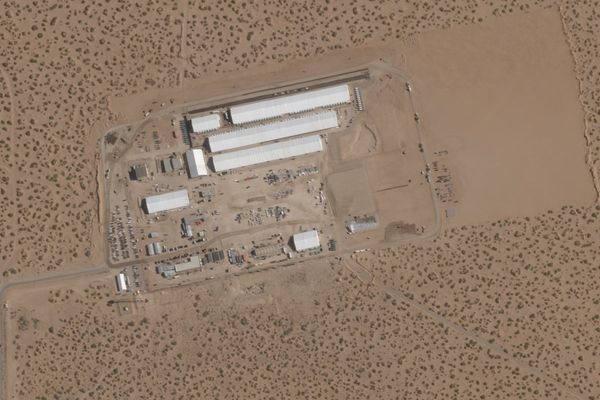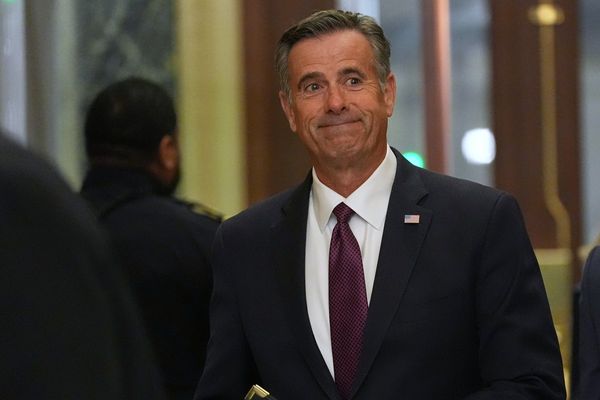
In July 2021, the Uttar Pradesh police claimed to have arrested two “active members of Ansar Ghazwat-ul-Hind”, the alleged affiliate of Al Qaeda in India. Minhaj Ahmad and Museeruddin were planning to “unleash terrorist activities before August 15 in different cities of the state, including Lucknow”, where they were held, the police alleged, and handed over the inquiry to the National Investigation Agency.
“The interrogation of the arrested accused brought out that they were members of the proscribed terrorist organisation Al Qaeda”, the NIA alleged in a chargesheet filed in a special Lucknow court on January 5, 2022. “They had conspired to wage war against the Government of India.”
Minhaj’s and Museeruddin’s families have denied that they were involved in “terrorist activities”. Minhaj, 31, ran a shop selling e-rickshaw batteries in Lucknow. Museeruddin, 41, drove an e-rickshaw for a living. They were friends.
So, what evidence has the NIA produced to back up its allegations?
The NIA’s case against the two friends, as laid out in its January chargesheet and a supplementary chargesheet filed on August 3, relies mainly on pictures, videos, WhatsApp and Telegram chats found on their phones; call data records; and financial transactions with Tawheed Ahmad Shah, a Kashmiri man arrested in UP in February 2022 and accused of masterminding the “terrorist conspiracy”.
Together with Minhaj, Museeruddin and Tawheed, according to the NIA, the “conspiracy” involved three other Muslim men from UP who have all been arrested and charged under penal sections for waging war against the government, the anti-terror law UAPA, the Arms Act, and the Explosive Substances Act.
‘Allegiance to Al Qaeda’
A seemingly key piece of evidence against Minhaj is a video of him purportedly reciting baiyat, or oath of allegiance, to Al Qaeda that the NIA found on Museeruddin’s phone.
“I am honoured to be associated with the mujahideen organisation Al Qaeda,” Minhaj, talking in Hindi, says in the video, according to a transcript provided by the NIA in its chargesheet. “Whoever is my emir, I will try and do everything for him since that is the wish of Allah. I’m joining the jihad because this land belongs to Allah and Allah is the ruler. And I will ensure that this continues till my last breath."
Minhaj, the NIA claims, “was radicalised since 2017 and he adopted the way of jihad so as to settle scores with the other communities”, presumably Hindus. And the baiyat, the agency argues, establishes his “trustworthiness to proscribed terrorist organisation Al Qaeda”.
“The scrutiny of extracted data brought out that Minhaj Ahmad was radical in his religious view,” the agency concludes.
It’s for this reason, the NIA claims, that Minhaj was entrusted with “recruiting members for Al Qaeda affiliate Ansar Ghazwat-ul-Hind”.
The theory of Ansar Ghazwat-ul-Hind operating in UP is based on information received by the police that an “Al Qaeda member, Umar Halmandi, based on the Pakistan-Afghanistan border, is radicalising and recruiting members”. The chargesheet doesn’t mention the source of this information.
The NIA further claims to have found four undated audio files that establish that both Minhaj and Museeruddin worked for Al Qaeda. The audios are “incriminating”, the agency claims. One has Minhaj purportedly telling Museeruddin that the “message has come for him to join the army” and advising that he must “take permission from family” before taking his oath of allegiance. Another has Museeruddin reciting his oath: “I am honoured to have joined mujahideen organisation Al Qaeda.”
Minhaj has disputed the NIA’s characterisation of the video. “I had seen a video on Instagram of a man making a similar pledge of allegiance to Al Badar. I replaced Al Badar with Al Qaeda”, he said in a July 2022 letter to his lawyer Mohammad Shoaib, referring to a now-marginal militant group operating in Kashmir. It was a joke, he claimed, intended to cheer up his friend, who was feeling low because of his daughter’s illness.
“An excerpt from a video does not prove links with Al Qaeda. Has the investigation agency shown or proved links with anyone from the proscribed organisation or even the purported handler?” asked Shoaib, who is representing Museeruddin and Tawheed as well.
Questioning the NIA’s reliance on Minhaj’s purported baiyat as evidence, he said, “You cannot take such an oath in isolation on your own. The second person who should have been administering the oath is absent.”
‘Process of radicalisation’
The chargesheet also contains as evidence transcripts of audios and videos purportedly found on the cellphones of Museeruddin and Minhaj that contain talk about jihad. Most of the transcripts are not dated and carry little, if any, context.
Referring to the lynching of Pehlu Khan in Alwar, the lynching of Junaid Khan on a train in Faridabad and the assault on an elderly Muslim man in Ghaziabad, one transcript quotes Minhaj as saying, “I have stopped myself so far because of my parents or these people would have feared the name of Minhaj as the name of Salahuddin Ayyubi was feared by kuffar and as Aurangzeb was feared by Hindus.”
Salahuddin Ayyubi was a mediaeval Muslim ruler who fought and defeated the Crusaders in the Levant, while Aurangzeb ruled the Mughal empire in the 17th century.
In another transcript, he is quoted as saying, “Given the prevalent circumstances, my understanding is that if we don’t participate in jihad now, we won’t be able to save the honour of our daughters, sisters and mothers.”
He’s further quoted as claiming that his “thought process began to change in 2017-18 after the debate over Babri Masjid and incidents of lynching of Muslims.”
According to a 2019 report by the Human Rights Watch, Hindu mobs lynched at least 36 Muslims across the country from May 2015 to December 2018.
“Investigation agencies often seek to prove the alleged motive by building their cases on the basis of radicalisation. But evidence of radicalisation may not stand the scrutiny during trial,” Supreme Court lawyer Abu Bakr Sabbaq, who has appeared in such cases, told Newslaundry.
By way of example, Sabbaq cited the encounter killing of Saifullah Khan by the UP police in 2017. “A cousin of his made a statement regarding a video of baiyat and a video of beheading by ISIS, but since they were in Arabic, the witness, during cross examination, couldn’t comprehend the exact meaning of the purported videos,” he said.
The trial is still ongoing.
‘Incriminating evidence’
Another video allegedly found on Minhaj’s phone, the NIA claims, shows he and his friend were “reconnoitring important places in Lucknow” to target.
A transcript provided by the NIA quotes a conversation between them in Hindi. Referring to the Mohibullapur locality in Lucknow, Museeruddin tells Minhaj, “My childhood was spent here and 95 percent of the families are affiliated to the RSS.”
Minhaj, in his letter to the lawyer, rejected the NIA’s implication. “Anyone who watches the video with an open mind will say one person is simply showing the other the place where he has been living since childhood,” he contended.
If the video was indeed of a reconnaissance mission, he asked, why would he not have deleted it soon after?
The other “incriminating” evidence presented by the NIA includes books such as 9/11, which the chargesheet claims seeks to “justify the attack on the twin towers” in America, Guerrilla Warfare in the Light of Martial Art, Why Did I Choose Al Qaeda, and Jihad of Those Who Do Not Attend Jihad; an alleged online manual for preparing IEDs called Explosive Course; pictures of three militants killed in Kashmir in April 2021.

‘Possession of explosives’
After Minhaj and Museeruddin were held, visuals of a bomb disposal squad exiting Museeruddin’s house with a pressure cooker were flashed all over TV news channels. The cooker, the UP police claimed, was packed with “2.5 kg iron nails and 78 packets of Homelite match boxes” and “attached with high-power battery and detonator”. The contraption, they claimed, was an IED.
From Minhaj’s home they claimed to have recovered a pistol, four cartridges, eight boxes of ball bearings, two pressure cooker IEDs, potassium permanganate powder, and 168 packets of match boxes.
Minhaj’s father, Siraj Ahmad, claimed that the police “cordoned off our son’s room” when they raided his house and did not show them what they found inside. “I would say these are mere allegations and evidence collected so far seem to be baseless,” he said.
Speaking to the Leaflet in 2021, Museeruddin’s wife, Saeeda, said that they had bought a new cooker and a chulha and that is what the police took away, along with some posters in Urdu and their children’s books.
“When the police came, there was no gate and one of the walls was missing. People who live like this don't do such things,” Saeeda told Newslaundry at her home in Mohibullapur.
Saeeda and Museeruddin have three young girls and a boy. The two older girls, aged 15 and 14, were expelled from the Lucknow Inter College, Lalbagh, soon after their father’s arrest, without an explanation. The youngest girl, 12, is suffering from an ailment that prevents her from attending school. The boy is five.
“We are holding on somehow,” Saeeda said.
Newslaundry made repeated attempts to contact Rajni Yadav, principal of the college, to ask about the girl’s expulsion but without success.
The NIA sent the material taken from Minhaj’s and Museeruddin’s homes to the government forensic lab in Agra, which “established that they had collected explosive substances for preparation of IEDs with an intention to wage war against the Government of India, thereby committing a terrorist act”, the central agency’s chargesheet claims.
The NIA also relied on a statement by Sunny Gupta, a shopkeeper in Lucknow’s Daliganj, who claimed to have sold 50 kg potassium permanganate to Minhaj and Museeruddin in March 2021.
Minhaj has countered that the “explosives” weren’t what the police and the NIA made out to be. “Musheer bhai’s daughter had found a few boxes of firecrackers that wouldn’t burst because of moisture,” he claimed in his letter to the lawyer. “I took out the powder and with help from YouTube managed to burst them and made videos of it.”
It’s apparently these videos that the investigators have presented as “IED explosions”, he added.
Anurag Singh in Lucknow contributed reporting and pictures.
Newslaundry is a reader-supported, ad-free, independent news outlet based out of New Delhi. Support their journalism, here.







